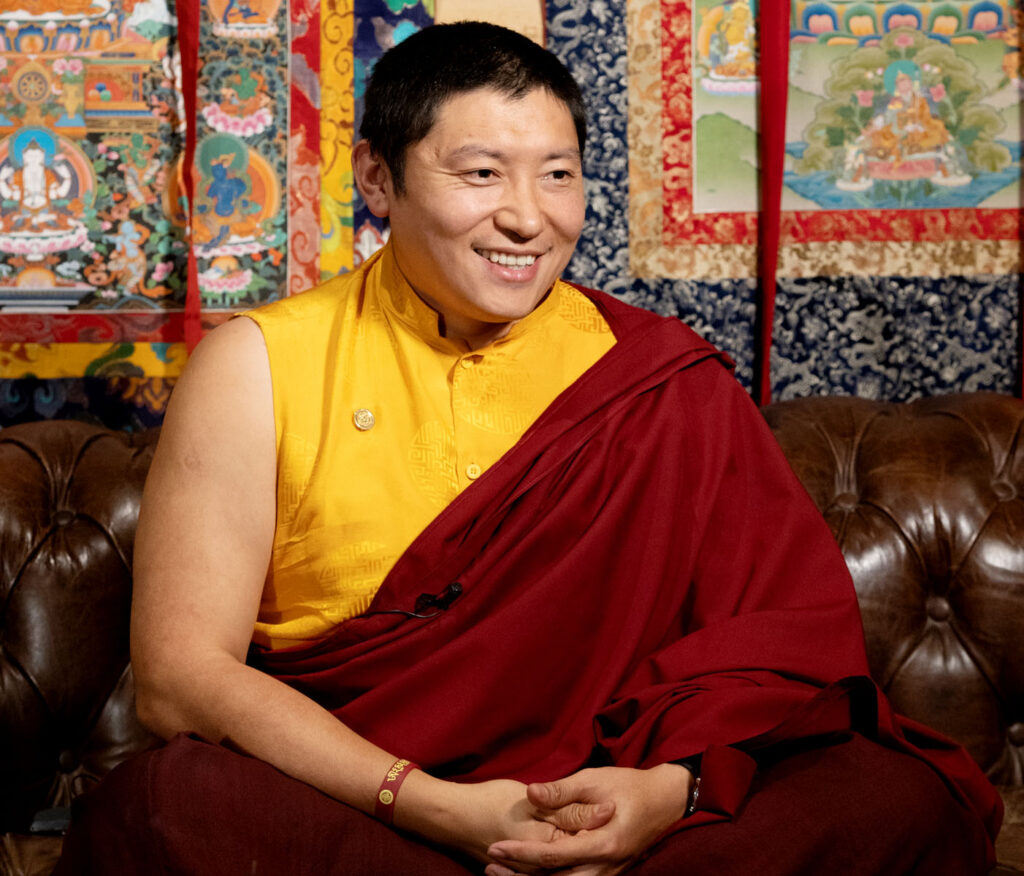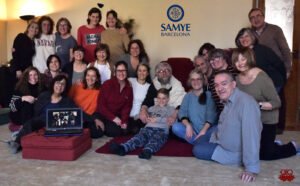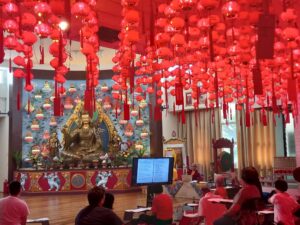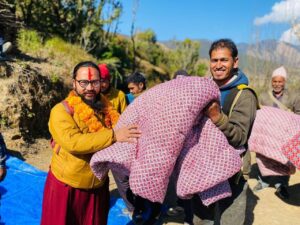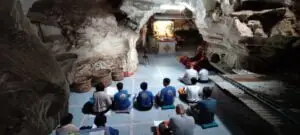Phakchok Rinpoche will offer a series of Dharma teachings over the course of the next month. As the teachers regularly remind us, the gift of the precious Dharma is the supreme offering as it alone unfolds the path to the cessation of suffering and to complete enlightenment. Phakchok Rinpoche has now decided to offer clear guidance to help us identify our current location on the path and what steps we need to take in order to progress.
In the Dhammapada, in answer to a question about the best type of offering, Buddha Shakyamuni advised the king of the gods Sakka,
Sabbadanam dhammadanam jinati
Verse 354, Sakkapanha Vatthu
sabbarasam dhammaraso jinati
sabbaratim dhammarati jinati
tanhakkhayo sabbadukkham jinati.
The gift of the Dhamma excels all gifts;
Dhammapada Verse 354
the taste of the Dhamma excels all tastes;
delight in the Dhamma excels all delights.
The eradication of craving overcomes all suffering.
Zoom Teachings on the Student Pathways
Phakchok Rinpoche invites all of his students and any individuals with sincere interest to join in the 1st, 3rd, 4th and 5th of these teachings. The second teaching, on the Lamrim Yeshe Nyingpo (The Gradual Path of the Wisdom Essence) is restricted to students who have previously attended the retreat with Phakchok Rinpoche. Only those students will be permitted to register for that particular teaching. Please note that even if you were unable to attend the prior retreat, opportunities will arise in the future to join those teachings.
Rinpoche will also be answering selected questions from students so we encourage you to submit direct and concise questions when you register. Even if Rinpoche does not have the time to address each question, he will read all of your questions. The goal for each student should be to understand exactly where he or she is currently on the pathway and to know clearly how to proceed. Please review the information below on the pathways to help you orient yourself and frame your questions skillfully.
Dharma Teaching Schedule
Saturday, January 9, 2021, First Teaching Topic: Where are You on the Path? An Overview of the Student Pathways
Saturday, January 16, 2021, Second Teaching Topic: Lamrim Yeshe Nyingpo
*Restricted teaching for students who attended previous LYN retreat. Zoom registration information will be sent to you by email.
Saturday, January 23, 2021, Third Teaching Topic: Holistic Living
Saturday, January 30, 2021, Fourth Teaching Topic: Path of Meditation: Beyond Mindfulness
Saturday, February 6, 2021, Fifth Teaching Topic: Vajrayana: Ground, Path, and Fruition
Each of the sessions will take place from 5:45 to 7:15 pm Nepal Time. Please check the time zone for your own location here.
Registration for The Teachings
You must register in advance for these Zoom teachings. Please follow the links above to complete the simple registration process. After registering, you will receive a confirmation email containing information about joining the gathering. Either save your confirmation email or save the link provided in the confirmation email to your calendar. If you are unfamiliar with Zoom, please check out our Zoom FAQ .
Introducing Student Pathways
The Holistic Living Pathway
Individuals who are searching for help with stress and discomfort in daily life and are not interested in becoming a Buddhist may benefit from the techniques developed over 2500 years of history. As Rinpoche often remarks, all beings wish for happiness and relief from suffering. And we all benefit from learning the skills that make us more kind and compassionate to those around us.
Buddhist teachings offer deep insight into the nature of the mind and well-tested methods for developing our potential for kindness and love. Samye Institute’s Holistic Living programs are designed to heal the mind wounded by unstable and difficult parenting, relationships, friendships, jobs, loneliness, etc. The offerings include further training in mindful and compassionate behavior featuring mental, verbal, and physical exercises. These link to the aspects of wisdom, compassion, and dignity. We recommend that people begin by working with the exercises described in the Radically Happy book and the video and audio teachings related to that.
Mahamudra: The Path of Meditation
Students who wish to study under the guidance of Phakchok Rinpoche come to the Buddhist pathway with different inclinations, backgrounds, and temperaments. Therefore, Rinpoche follows the Buddha’s example of providing multiple gateways or entry points into a genuine and authentic path leading to complete awakening. After two decades of working with students, Rinpoche advises people to move along the Vajrayana pathway with a structured approach.
These progressive programs are open to anyone. The Path of Meditation Levels 1 and 2 are required for all students of Phakchok Rinpoche. Each stage of the Path of Meditation is designed to take approximately one year. Individual progress will vary depending upon diligence and prior training. Students are advised to discuss progress with an instructor before moving from Level One to Level Two. We recommend that when the student has completed the Path of Meditation Levels 1 and 2, the student will proceed to study the Samadhi Raja Sutra teaching (In the Footsteps of Bodhisattvas) which includes an introduction to the Vajrayana Path.
When the student has completed these programs and receives the Pointing Out instruction, the student has a choice of entering the Nine Yanas program or the traditional Vajrayana path. We advise students to discuss their choice with Rinpoche or an instructor. It is important to note that one choice is not “better” than the other. Instead, one should make the choice based on the considerations of one’s interest, karmic propensities, and available time.
Nine Yanas: The Path of Study
In the Nine Yanas program, students approach Vajrayana gradually through more intensive study and contemplation.
The first Six Yanas of the program include teachings, contemplation, and reflection exercises that unfold gradually. Each student also practices the Treasury of Blessings as a framework for meditation practice. This progressive approach provides a structured framework with which to better understand and implement the Buddha’s precious teachings. By studying, contemplating, and meditating in stages like the levels of a staircase, we can gain realization more swiftly.
First Three Yanas
Study: Shravaka-, Pratyekabuddha- and Bodhisattva-Yanas
Practice: Buddha Shakyamuni Practice (Treasury of Blessings)
Three Outer Tantras
Empowerment: Green Tara
Study: Kriyayoga, Upayoga and Yoga Tantras
Practice Text: Zabtik Drolchok
Recitation: Atisha’s five stanzas practice
Upon completion of the first Six Yanas, the student joins the Traditional Vajrayana Path and starts the Ngöndro practice.
Traditional Vajrayana Path
Students who have prior familiarity with Buddhist principles, prior meditation experience, or a strong connection to the Vajrayana may decide to enter this path. One begins by taking the refuge and bodhisattva vows. This path was most commonly followed by the practitioners and great masters of the past in Tibet. As Phakchok Rinpoche is a primary lineage holder of the New Treasures of Chokgyur Lingpa or Chokling Tersar, this path centers around these profound teachings and practices.
Initial Practice:
- Reflection on the four mind changings
- Learning and focusing on the refuge precepts
- Students may choose to take additional precepts
- Bodhisattva vows
Ngöndro
Empowerment: Tukdrup Barché Kunsel
Mahayoga and Beyond:
Here the Traditional Vajrayana and the Nine Yanas Pathways merge into one stream.
Three Inner Tantras
Students engage in the practice of the Mahayoga, Anuyoga, and Atiyoga. The students begin Mahayoga practice after having gained stability in karma, bodhicitta, devotion, recognition and samaya.
Mahayoga
Empowerment: Tukdrup Barché Kunsel
Spiritual Foundation: Lamrim Yeshé Nyingpo and Tukdrup Barché Kunsel (Chapter 4: Guru Nangsi Zilnön, Yeshé Zangthal)
Practice: Three Roots
Focus:
- Learning and reflecting on the Mahayoga Samayas.
- Establishing the view of the Mahayoga: perfect pure equality (kundzop dhakpa chenpo, döndam nyampa chenpo)
Three Roots
- Lama: Guru Rinpoché: Concise Daily Practice and Trinlé Nyingpo
- Yidam: Dorjé Sempa (peaceful) and Dorjé Phurba (wrathful)
- Khandro: Kurukullā and Jetsün Drolma
Anuyoga and Atiyoga: Eligibility to continue to these levels will be determined by Phakchok Rinpoche
Dzokrim: Completion Stage
The student trains in the completion stage having gained stability in karma, bodhicitta, devotion, mind recognition, and the Mahayoga view and samayas.
Anuyoga
These teachings will be given in detail to those students who engage in the Three-Year Retreat.
Nadi, Prana and Bindu
Spiritual Foundation: Lamrim Yeshé Nyingpo and Tukdrup Barché Kunsel (Chapter 9: Guru Dzamling Gyenchok: Dechen Zangthal)
Practice: Six Vajra Yogas (Dorjé Chö Druk). These are Heat Yoga, Illusory Body, Luminosity, Dream Yoga, Phowa, and Bardo.
Focus: Primarily on Heat Yoga, Bardo, and Phowa
Atiyoga
Spiritual Foundation: Lamrim Yeshé Nyingpo and Tukdrup Barché Kunsel (Chapter 16: Guru Dechen Gyalpo: Ösal Zangthal)
Practice: Trekchö: Cutting Through
Translations
简体中文
繁體中文
Bahasa Indonesia
Português
Русский
Español
ภาษาไทย
Українська
Việt Ngữ


